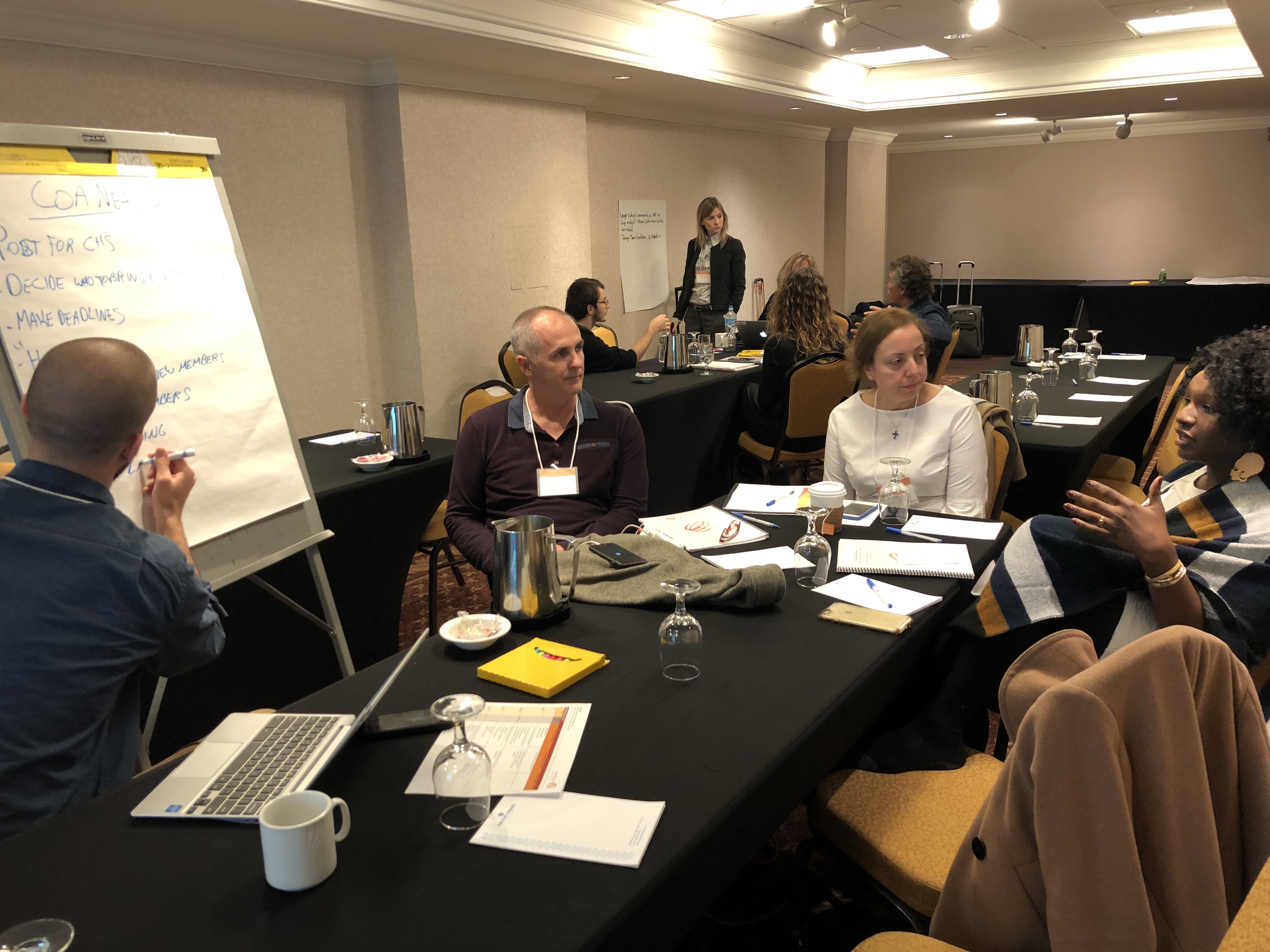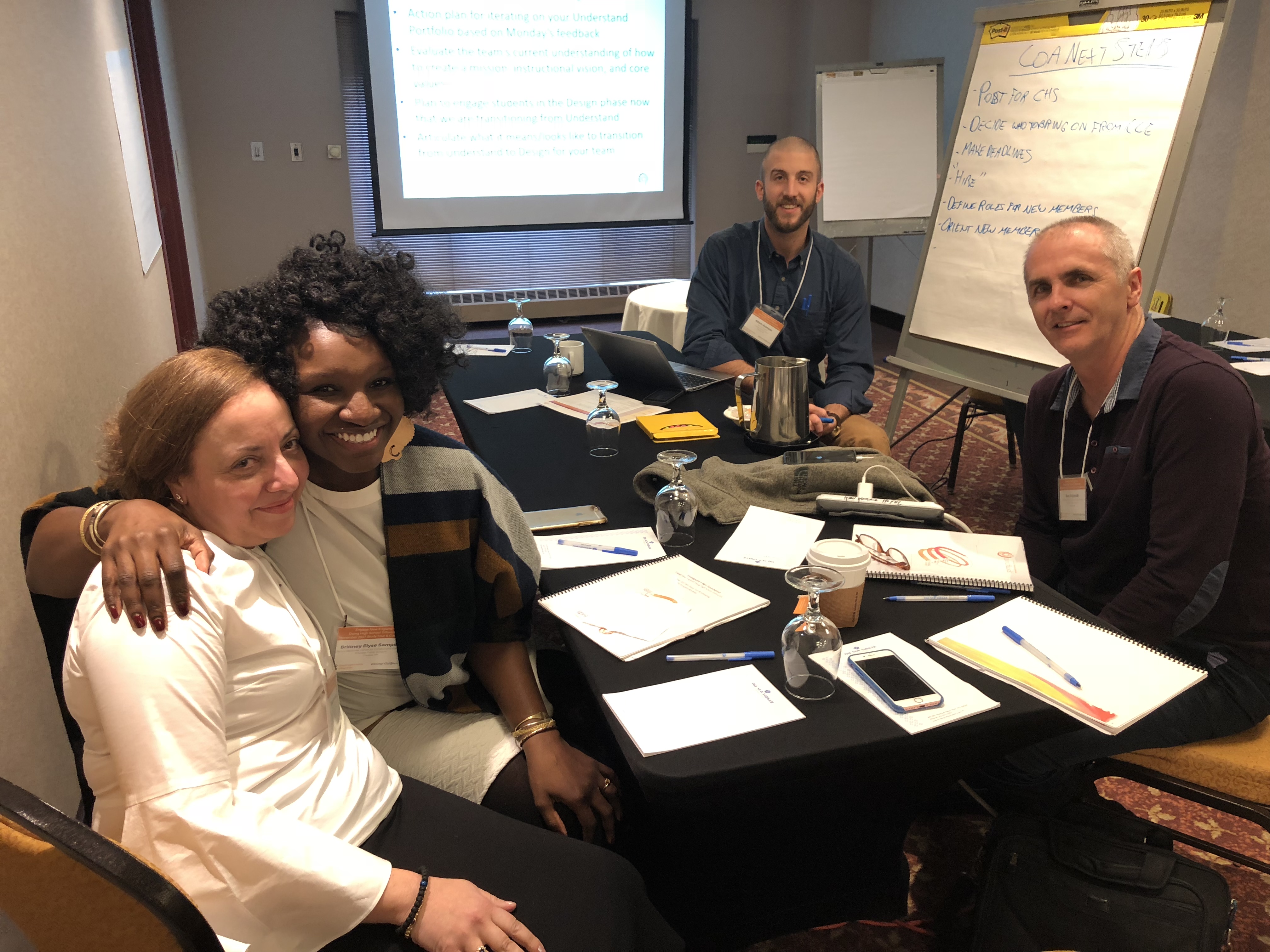Chelsea Public Schools serve more than 1,500 high school students in Chelsea, Massachusetts north of Boston. Though they aim to reach all their high school students, they have found that sometimes the resources and structures aren’t in place to serve every single student—whether it be those who drop out without a viable plan or overage students with major educational gaps or limited English proficiency. Identifying this gap has led to a unique opportunity to design a school-within-a-school specifically tailored to meet the needs of students who are off-track toward graduation.
This school-within-a-school—Chelsea Opportunity Academy (COA)—will fill an important need in the community. COA will better serve current students and incoming students that Chelsea High School does not currently serve. Instrumental in the success of COA is an intentional, student-centered design process. Springpoint is partnering with COA on the design of the school through Barr Foundation’s Engage New England initiative. We spoke with Ron Schmidt at Chelsea Public Schools about the school design team’s early work within the Understand phase of the process.

What is the most important thing that you have learned so far in the design process?
While our team has a lot of familiarity with our students, particularly those who are over-age and under-credited, we have been careful not to make assumptions throughout this phase of the design process. Approaching this work with a blank slate mentality is allowing us to learn from our young people directly as well as others in our community. This allows us to go into student interviews and focus groups open to hearing what our students have to say.
What are some of the research activities you have engaged in to better understand your student population?
We’ve crafted a research plan to guide this work that has been helpful and foundational in keeping us organized as we source information from different stakeholders in the community.
We’re conducting exit interviews with students who are leaving to understand what compels their decisions. We’re talking to former students who are coming back looking to re-enter school. Unfortunately, we are not always in a position where we can accept them because of their age and the amount of credits. Through this design process—and in opening our new school—we will be able to serve more of these students and support them earlier, so it is important to include this population in our Understand work as well.
I’ve also held a focus group with parents, which was illuminating. Seven parents joined—three parents of current students in upper grades and four who have new students attending. One thing I found was that all these parents had a sense of pride that they were invested parents, working to understand the school system. I also learned that there’s a fear among new students prior to entering high school. They had all heard things that concerned them about Chelsea High School that turned out to be untrue; unwarranted concerns can negatively influence a student’s outlook and experience at school. These two insights made me think about the important role that caring adults play in students’ lives. As we go down the road toward design, that might look like a mentorship structure or a way to coach parents and family members to be involved in a students’ educational experiences. This can further help demystify what school looks like for entering students.
Who is on your design team and how is their expertise helping shape the work?
I am the leader of the design team, and I’m joined by our lead guidance counselor who has direct contact with students entering and exiting the school; she knows our students well. We also have our dean of discipline, a former special education teacher, who has a passion for working with this population of students. He is proficient in Spanish, which has helped us engage in our research conversations as we’re collecting data. We also have district expertise on the team—a central office representative and the deputy superintendent. Additionally, we have a partner who is co-leading this work with us, the Center for Collaborative Education (CCE). Following the data collection phase, we’ll expand the team to bring in more voices and expertise, including students and parents.
Living for 17 years in Guatemala and speaking fluent Spanish, I am able and excited to make connections with parents and the community. As the design team leader, my passion for and understanding of the culture of many of our students will be helpful in the design of the school, in providing support to families, and helping them resolve challenges they may face.

Many talented, passionate educators are involved in the Engage New England work, which aims to create a collaborative network of school designers. What is your advice for your fellow school designers?
It has been great to be part of Barr Foundation’s network of school designers. Our advice to our fellow designers—and anyone engaging in this work—is to be careful about making assumptions. For example, I felt that I completely knew who our students are. I thought that I could create a student profile simply based on my experience. But I am learning more, at a deeper level, about who our students are and their needs in ways I hadn’t yet considered.
Before, it was just about collecting data to understand students but now I am gathering data with a more solutions-oriented approach. In other words, how can we know our students at entry and plan to meet their specific needs to reach our vision of a graduate? We’re learning over and over that traditional school does not work for some of our student population. They require schools that are designed meet their unique needs—that will meet them where they are and support them in their educational process through graduation. That might mean competency-based education, partial schedules, evening classes, online education and academic activities to give students credit for their jobs outside of school.